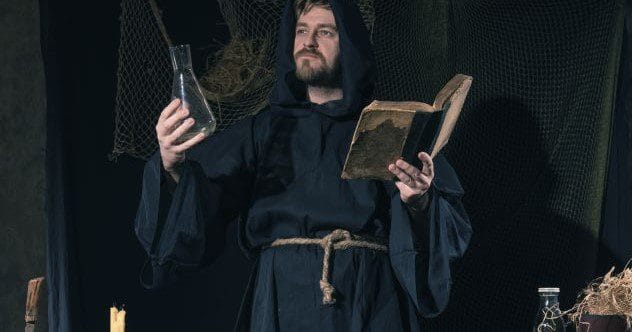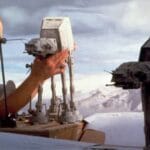The common myth paints the Middle Ages as a period of intellectual stagnation in Europe, but this couldn’t be further from the truth. Science flourished, often supported by the Church, with numerous scientists emerging from the ranks of monks and prelates. Let’s delve into the lives of ten individuals who made medieval European science truly remarkable.
Augustine’s Theory of Evolution
While fundamentalist Christians often reject evolution based on a literal interpretation of Genesis, the early Church adopted both allegorical and literal readings. St. Augustine of Hippo (354–430), a prominent theologian, offered insights into the six days of creation, suggesting they weren’t like our solar-governed days. This perspective allowed him to propose a form of theistic evolution, anticipating Charles Darwin by 1,400 years.
Augustine theorized that primeval waters birthed “all kinds of animals, plants, and trees… each according to its nature.” He spoke of “primordial seeds” from which life originates, using a tree’s growth as an analogy to explain that God intended species to develop over time, rather than creating them instantaneously. Augustine’s intuitions, grounded in analogy and common sense, revealed a profound scientific truth.
The Scientist Pope
Gerbert of Aurillac (d. 1003), a Frenchman who became Pope Sylvester II in 999 AD, was a scientist who studied astronomy, geometry, and mathematics in Muslim Spain. He was the first known Christian to use Arabic numerals in mathematics, popularizing their use.
Gerbert also made astronomical observations using a self-made sighting tube, recording star positions relative to celestial longitude and latitude. He invented auxiliary spheres to identify constellations and planetary orbits. A keen musician, he built an innovative hydraulic-powered organ with brass pipes and even constructed a mechanical timepiece.
His brilliance led to rumors of magical learning in Spain, but regardless, Gerbert was undoubtedly a Renaissance Man ahead of his time.
The Flying Monk
Eilmer of Malmesbury (b. 980) was no ordinary monk; around 1005, he became Britain’s first aviator. Inspired by the tale of Daedalus, Eilmer leaped from the 82-foot tower of Wiltshire Abbey, gliding approximately 650 feet before crashing.
He survived but broke both legs, later attributing his failure to the absence of a tail. Modern calculations confirm that a southwest wind would have aided his glide, while the lack of a tail would have caused his sideways landing at Oliver’s Lane, 650 feet away.
Although not entirely successful, Eilmer’s flight kept the dream of human flight alive, inspiring future inventors.
Sacrobosco’s Sphere
Medieval scholars knew the Earth was round, with Eratosthenes having calculated its circumference in antiquity. John de Sacrobosco (1195–1256), or John of Hollywood, played a key role in popularizing this knowledge.
His work, “The Sphere,” served as a foundational science textbook for centuries, reinforcing the Earth’s spherical nature. John used observations like ships disappearing over the horizon and changing constellations to illustrate this concept.
He noted that seas “naturally seek a round shape,” like droplets on a leaf. Sacrobosco taught generations the math and science underlying natural phenomena.
The Man Who Created Rainbows
English Franciscan philosopher Roger Bacon (1220–1292) foreshadowed experimental science. A student of mathematics and astronomy, he was the first European to describe gunpowder. He also envisioned flying machines, motorized ships, and automobiles centuries before they were realized.
Bacon emphasized empirical methods, learning through experimentation. He invested heavily in instruments and assistants to conduct optical experiments, studying light and developing telescope-like devices. He once created a rainbow by passing light through a glass bead, replicating a natural phenomenon in the lab.
His knowledge sometimes led to accusations of sorcery, possibly contributing to his later condemnation and imprisonment.
The Beginning of Zoology
Medieval scholars often favored sciences with practical applications over zoology, relying on Aristotle or superstitious lore for animal knowledge. German theologian Albertus Magnus (d. 1280) pioneered the use of direct observation to study living things.
Albert’s “De vegetabilibus et plantis” and “De animalibus” covered animal and plant species, taxonomy, anatomy, and diversity. He dissected animals to correlate anatomical structure with behavior, grouping animals by physiological capabilities and differentiating social from solitary ones.
His extensive investigations of the natural world and intricate descriptions laid much of the groundwork for modern zoology.
Grosseteste’s Multiverse
The concept of a multiverse is a cornerstone of modern cosmology. Scientists analyzing English philosopher Robert Grosseteste’s (1175–1253) 1225 Latin text discovered he was proposing a multiverse theory and the Big Bang.
Translating his ideas into mathematical equations, they found that Grosseteste’s model of the universe could have indeed formed as he imagined. This involved an initial Big Bang, the coupling of light and matter, and concentric spheres created by the compression of radiating matter, with an imperfect core becoming Earth.
Grosseteste suggested that different conditions could produce different universes, anticipating the multiverse concept. Physicist Richard Bower noted the depth of logical argument in the Middle Ages.
Solving Perpetual Motion
Peter Peregrinus of Maricourt (b. 1240), an engineer in the French army, made seminal contributions to the study of magnetism. His experiments laid the foundation for William Gilbert’s work on magnetism and electricity. Peter was the first to assign poles to magnets, discussing their properties in his treatise, “Epistola de magnete.”
Peter improved the compass, allowing mariners to determine their position and the azimuth of celestial bodies, impacting the coming Age of Discovery. He also tackled perpetual motion, proposing magnetic-powered wheels and a magnetic globe synchronized with the celestial sphere for astronomical observations and timekeeping.
Though unrealized, these devices highlighted practical applications of magnets.
Buridan’s Laws of Motion
Jean Buridan’s (1301–1358) law of impetus suggested that the cosmos operates without supernatural intervention. This breakthrough anticipated Galileo and Newton’s laws of motion. He proposed that a moving object continues moving unless stopped by an external force, needing only initial velocity. Impetus is proportional to a body’s weight and velocity.
Buridan argued it was unnecessary to posit intelligences as movers of celestial bodies, suggesting God imparted initial impetus to the spheres, which continues due to the absence of resistance.
His ideas paved the way for understanding that one set of laws governs celestial and terrestrial motion, preparing the ground for Newton’s theory of gravity.
Heliocentrism before Copernicus
Nicole Oresme (d. 1382) anticipated Copernicus’s heliocentric views in the 14th century, arguing that biblical references to a stationary Earth shouldn’t be literal. He entertained the possibility that Earth spins on its axis.
Addressing the objection that an arrow fired upwards wouldn’t fall to the west if the Earth moved, Oresme asserted that all motion is relative. Though his faith led him to maintain belief in a stationary Earth, his insights were remarkable.
Oresme favored naturalistic explanations over supernatural ones, mistrusting the occult and “marvelous” events. He also invented coordinate geometry before Descartes and used fractional exponents.
In conclusion, the Middle Ages were far from a scientific dark age. These ten individuals exemplify the era’s intellectual vibrancy and profound contributions to various fields of science.
What do you think about these medieval scientific minds? Leave your comment below!










